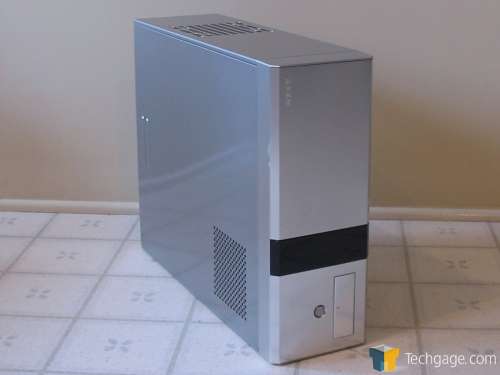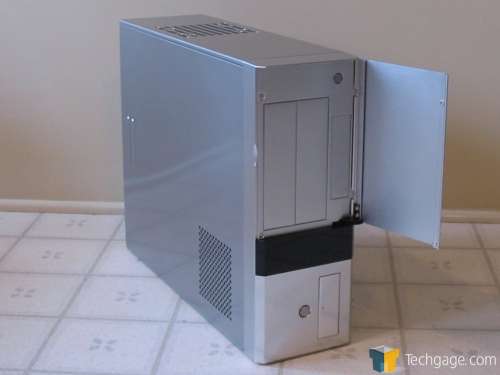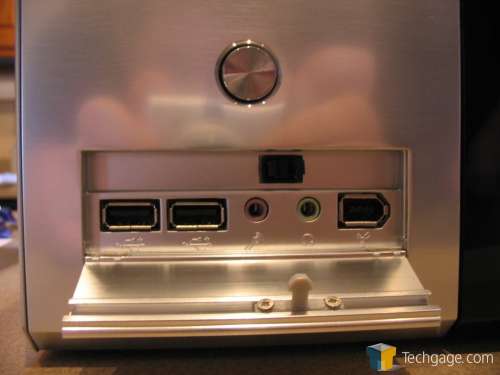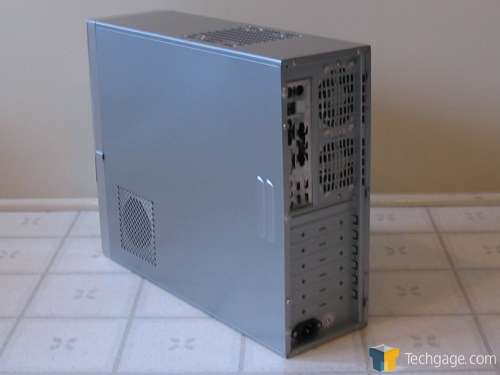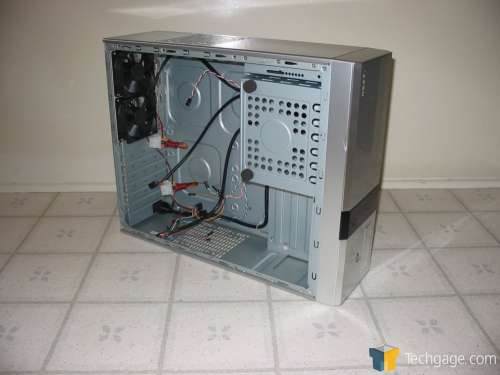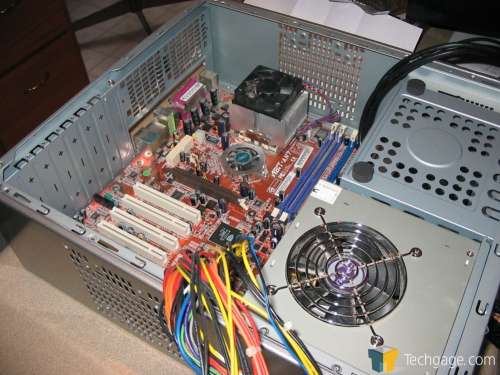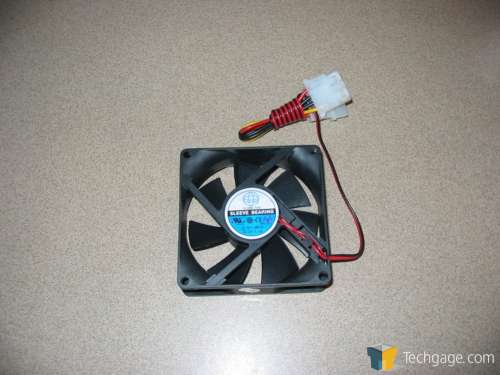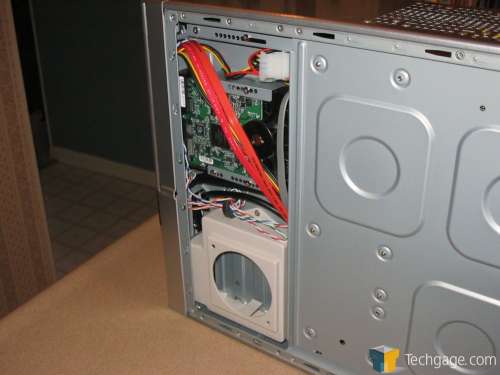- Qualcomm Launches Snapdragon 4 Gen 2 Mobile Platform
- AMD Launches Ryzen PRO 7000 Series Mobile & Desktop Platform
- Intel Launches Sleek Single-Slot Arc Pro A60 Workstation Graphics Card
- NVIDIA Announces Latest Ada Lovelace Additions: GeForce RTX 4060 Ti & RTX 4060
- Maxon Redshift With AMD Radeon GPU Rendering Support Now Available
NZXT Duet
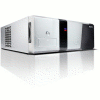
Home Theater PCs are the fastest-growing trend in home computing. Here’s an in-depth look at enthusiast case maker NZXT’s first HTPC case, the Duet. With its tasteful looks, clever design, and ample cooling, this case has serious potential.
Page 3 – NZXT Duet Features Overview
The overall design of the Duet is elegant, somewhat evocative of their Lexa case while preserving straight edges and lines which will help this case fit in among high-end audio equipment. To conceal this case in an equipment rack, however, would be to do it a disservice in my opinion, since NZXT has served up a real looker, blending brushed and clear-anodized aluminum with a bold strip of glossy black plastic. Whether you desire a stylish case for your home theater PC or an eye-catching slim tower for a desktop application, the Duet’s convertible design and attractive styling can satisfy the need. I personally find the Duet’s aesthetics quite fetching.
The NZXT Duet conceals its drive bays behind a door made of extruded aluminum. Pull the door to unlatch it, and it glides gracefully down rather than falling open with an unceremonious ‘thunk’, which is a nice touch. Some PC enthusiasts don’t appreciate doors on cases, but the concealment of the optical drive and bay covers is essential to the overall styling of this case. This isn’t really what I think of as a typical enthusiast case anyway.
A second small door in the front of the case conceals audio, USB, and Firewire ports. The inclusion of a front Firewire port is good to see; connection of a video camera to a system built in the Duet should be hassle-free. The front USB ports provide easy insertion points for USB flash drives, and the front audio ports provide convenient connections to those using the Duet as a desktop PC case. It’s hard to find a case in this price range these days that doesn’t have these amenities.
The NZXT Duet is a little case with a big heart. It has room for a full ATX motherboard, a feat accomplished by moving the unit’s power supply into the front half of the case, in the space below/to the left of the drive bays. Seven full-height expansion slot covers are provided. A short run of heavy power cable connects the IEC connector on the rear of the case to the power supply itself. This configuration does achieve some space savings, but it introduces a new concern.
In most PC cases, the power supply exhausts its heat directly to the outside of the case, while the Duet’s power supply exhausts through a fan duct on one side of the case. The air must make a 180-degree turn through a narrow passageway in order to exit the case. In this situation, having a power supply with a 120mm fan isn’t necessary. I think the best kind of power supply to use here is one with Enermax-style dual fans. Particularly long power supplies will only make it more difficult to work inside this case.
Cooling for the case is provided by two 80mm fans in the rear, right where you’d expect them to be. The supplied fans themselves are nothing special, branded Globe Fan. I’m not a fan of case bling, so I’m a bit relieved that these fans don’t sport LEDs, cold cathodes, strobe lights, UV sensitivity, or spinners on the fan grilles. This is, after all, a HTPC case. The fans mount to a plastic bracket, which slides into place and locks with a pair of screws. I’d rather screw my fans directly to the case metal, though – plastic brackets tend to allow vibration and noise.
The fans are a low-speed model, and use sleeve bearings. Sleeve bearings in general are quieter than ball bearings, but typically last about 6 years in continuous service while a ball bearing fan can last 10. Longevity of these fans relative to the upgrade cycle of a PC isn’t a major concern, however, and sleeve-bearing fans tend to provide audible warning (in the form of some nasty bearing noises) before they fail.
An additional 80mm fan slot is provided at the front of the case, in a fan duct which works to exhaust the hot air from the power supply. If you use a fan in this space, make sure it is exhausting air – otherwise you’ll be working against (!) the power supply’s own fan. An extra fan really isn’t necessary in this spot, I think.
Next, we’ll take a look at the process of assembling a system in the Duet.
|
|
Support our efforts! With ad revenue at an all-time low for written websites, we're relying more than ever on reader support to help us continue putting so much effort into this type of content. You can support us by becoming a Patron, or by using our Amazon shopping affiliate links listed through our articles. Thanks for your support!




